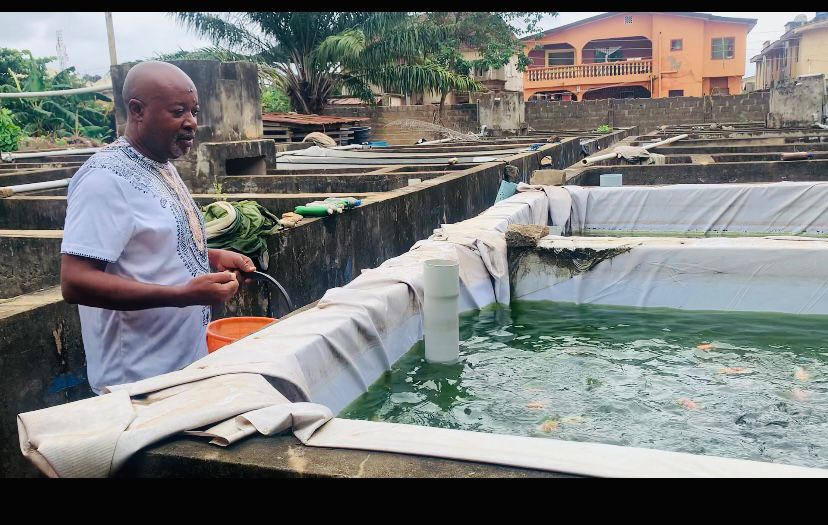
By Elizabeth Toyon & Maria Yusuf
In this interview, the National Vice President for Tilapia Aquaculture Developers Association in Nigeria, Nurudeen Tiamiyu reveals the dormancy of the Department of Fisheries under the Marine and Blue Economy Ministry.He spoke on heavy cost of fish importation , analysed opportunities for wealth creation through Blue Economy and other issues.
What is your name and your designation?
My name is Nurudeen Tiamiyu. I am a Tilapia fish farmer in Nigeria, and I run Latia Global Investment Limited in Lagos. I am also the National Vice President for Tilapia Aquaculture Developers Association of Nigeria, which is the umbrella body for Tilapia farmers.
Comparatively , how has the fishing sector performed under the Ministry of Marine and Blue Economy compared to when it was under the Ministry of Agriculture?
Unfortunately, we have not even seen any traction when it comes to the issue of fishing and aquaculture. We had a stakeholder meeting some time ago and we expressed our desire to work with the new ministry. It’s a new ministry, and like every other thing, we have our own problems. Unfortunately, we are not getting that feedback from the ministry through the Department of Fisheries and these last two years, they have not really done differently from when they were under the Ministry of Agriculture. Under the Ministry of Agriculture, they were not the A-list but with this new ministry, it seems a bit even worse . If you look at the Ministry of Marine and Blue Economy, they have major players.
They have the Nigerian Maritime Administration and Safety Agency (NIMASA), Nigerian Ports Authority (NPA), and every other sector, which I call the big boys of the maritime industry. Unfortunately, we are not looking at the marine environment as a money spin, and in terms of employment generation, food generation, we are looking at revenue.
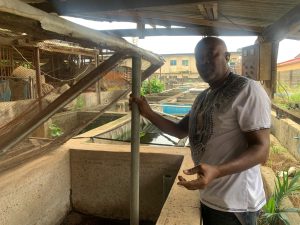
NIMASA brings its own money, NPA brings its own money, National Inland Waterways Authority (NIWA) will bring their own money and we are talking of revenue.
But when we have a coastline of almost 850 kilometers from Lagos to Calabar , and we are not generating wealth from that water resources, in terms of fisheries, agriculture, and employment, then what is the essence of having a marine and blue economy? What we have is a marine economy, but we are not using the blue part of it, which is the ocean to create wealth because it is not the issue of just having revenue, but you create wealth from that environment. We are not seeing that traction.
At the last stakeholders meeting, I asked the Minister of Marine and Blue Economy, Adegboyega Oyetola why the Department of Fisheries is being treated like an unwanted child in a family that wants to eat fish? The Department of Fisheries is not getting that kind of support to reach out to the farmers. So, for me, I have issues like many farmers. We have issues in having the Department under that ministry, and they are not flourishing.
Nigeria still imports stockfish from Norway. What is the prospect of Nigeria being self sustenant through fishing?
Unfortunately, we have people in government that are not looking deeply into issues. Now in Nigeria, we are importing $1.2 billion worth of frozen fish every year. Presently that’s almost N1.8 trillion . We’re actually taking N1.8 trillion worth of jobs outside.
Nigeria needs at least 4 million metric tons of fish every year for nutritional needs. If you look at the Food and Agriculture Organization (FAO) figure of 20 kilo thereabout per capita of fish consumption, we have a population of over 200 million. So, we need 4 million metric tons.
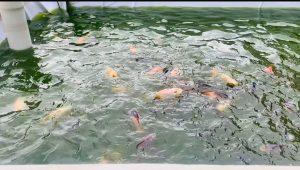
In between aquaculture, capture of fisheries, we’re not even doing up to 1 million metric tons. We’re importing close to 1 million, 1.2 million metric tons and that’s like 1.2 $billion. That is a lot of forex that we’re pushing out. We said it over there that if you dedicate funds at 0 to 2 percent for farmers and put down 1 billion dollars for farmers to use for aquaculture, then in four years, you can actually reduce your importation by at least 50 percent. Definitely, we can’t grow all the fish we eat in Nigeria. We can only grow tilapia, codfish, pangasius, and few other fishes.
We cannot grow mackerel fish but we cannot grow some of the sea fishes. Actually, the are not grown , they are captured and brought to Nigeria.
We have capacity to do all these things .We have a paradigm shift from having government telling us farmers should go and produce fish with what resources? I was in Uganda a few weeks ago and if you see the kind of resources they get to help their farmers, the irony is that even the kind of size we achieve in six months, they don’t get to achieve that in eight to ten months.
We have everything cut out for us to actually reduce the gap of importation by putting money in aquaculture. Presently, Nigeria is not even approaching the World Bank for money on aquaculture in terms of development and growth of the industry. If the government doesn’t approach the World Bank, they’re not going to give us anything on that.
There are other African countries getting money from the World Bank on developmental courses in aquaculture and fisheries and we have resources, but we need financing and dedicated people with clear understanding and clear paths for us to have a timeline. In 18 months, 24 months, and 4 years, where will be with this kind of funding? Where will we be in terms of technical partnership and where will we be in this kind of knowledge base?
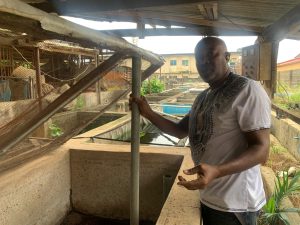
Grants are given to other countries by international organizations to import fish and Nigeria is not benefiting currently from it. How much do you think we have lost so far from this negligence?
We have lost so much. Unfortunately, the downside of that is that grants comes into Nigeria, like every other country, but when those grants come in, our typical corruption level wipes it out. The negative side of those grants is that when people that got the grant are writing reports, they embellish results and data to give to the donors and before you know it, Nigeria has been exited from some programs that have not even started.
I’ll give an example. There’s a project in Nigeria that came in. When the project had finished after four years in Nigeria, the result they gave was so embellished that it was very embarrassing to us.
Now, they started the second tier of that program and they removed Nigeria out of it because according to the program, Nigeria has surpassed the threshold of success in that program. Meanwhile, that’s a falsehood. Those are the kind of things that keep on repeating itself.
The donors also donate money, give grants, don’t have a checklist in terms of, what the deliverables are, and if they do post-impact assessment? They don’t. If they do post-impact assessment, before giving these set of grants, they will know where you are, what you really need, and where you are going, but it is not done yet. Lately, we’ve been hearing some issues of grants on seaweed, for example. Seaweed is an aquatic plant that grows in the marine environment. As of last year, the global market was $20 trillion. In 2032, the global market will be $32 billion.
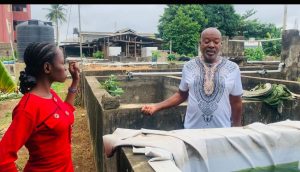
That is a huge resource, and we have water bodies that can grow seaweed in Nigeria. Seaweed can be used for several things, cosmetics, food, both for humans and animals.
I’m sure if you go to some malls in Nigeria, you will see seaweed biscuits. These are things made from seaweed. We’ve heard that there are some grants that are coming for this seaweed, but I’ve not seen where one kilo of seaweed has been sold in Nigeria.
Most of the time, all these grants get lost, because when those donors come in, they don’t look for practicing farmers. They look for people in academics. They believe we have the details, the data, but being data-driven has little to do if we are not getting that production of what we are looking at.
You have traveled far and wide, how will you compare government support for fishing in other countries with Nigeria?
Like I said, in Nigeria, we are not taking aquaculture and fisheries as something that would generate wealth which is very unfortunate. Because we are looking at animals, we are looking at plants and crops. But in a country that has over a thousand dams, rivers, lakes, and a coastline of around 50, 75 kilometers from Lagos to Calabar, that is enough resource for you to even see what all we are talking about.
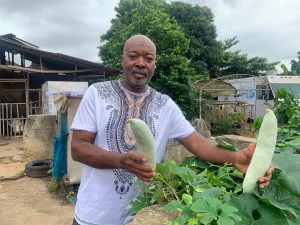
Government is not putting funding even to that sector. They don’t see it as something that can generate wealth for us because they just see fish farmers. Looking at the figure of imports, the Ministry is not even scared that this is supposed to be a sector where a state of emergency should be declared.
I don’t know how a country wakes up every year, spends over a billion dollars alone for one commodity, fish, which can be produced in Nigeria.
I was in Benin during COVID 19 period and I went to farms where government helped so much along with donor partners. Yes, we have a bit of glimpse in Nigeria. I’ll give an example.
The Lagos state government had this art piece project funded by the World Bank. It took the farmers from one point to a higher position. We must commend them for that. But it’s just too little, in what we need. Other countries see it as a major priority. All the countries I visited have Ministry of Water Resources and Aquaculture of fisheries.
They have complete ministries for fisheries and aquaculture. They don’t even have water bodies like Nigeria. What kind of funding are we even putting behind it? We have a population of 240 million and we are not doing anything about how they are going to get fish protein.
Other countries are putting money behind such things. When you travel, you see what they are doing. There are things some of us are doing in Nigeria, but we are not getting government support.
They are actually getting government support for some of those things. In a country where the government is even paying more returns on treasury bills, banks are doing more returns on dedicated financing, even the private sector will not be stimulated to put money in aquaculture. I made a joke with my friends in Uganda a few weeks ago.
I said, how many of you would have 1 billion Naira and put it in aquaculture today? Everybody laughed. Nobody wanted to do that because I can put that 1 billion in a bank in a year and get 80% and I won’t have nightmares. I will go to sleep. I can put it in government treasury bills and get between 80 to 20%.
That is the reason the sector is being run by small holders and small farmers.It’s not allowing people to even come in. Because when you have so much infrastructure deficit, nobody is going to put his money in doing infrastructure before he starts making money.
That is why they can just start making money from day one when they invest in treasury bills.
Is it possible for Nigeria to involve in fish farming in a volume that we can export? If yes, what is restricting us from doing so?
In terms of export, we are not even near it because one of the things you have to do is first of all look at your local consumption. What do you need? If you are not talking about export, when fish farmers in Nigeria say they want to export, some of them are not, I won’t say ignorant, but they don’t have good information when it comes to that. For you to export fish, farm fish, anywhere in the world today, apart from tuna, salmon, tilapia, catfish, your cost of production must not be more than $1 to produce 1kg of fish.
I belong to a group where we share data and the number of fishes coming in is alarming.
Presently, in China, you can get tilapia per kg at $0.75, frozen at their ports to be shipped. From India to Nigeria, you can get tilapia for $1.60. That is frozen tilapia packed, shipped to a Nigerian port. $1.60 is cannot feed 1kg of tilapia in Nigeria as we speak today.
So, the issue of export is not even something we should be talking about. Let us even see what we can do to break the gaps in imports and production of our farm fish to take us to a very good level where we can even have self-sufficiency before we start talking about export. Export can only happen when you look at shrimps because the price of shrimps is high.
It is not something that is very affordable yet. People can actually invest and spend so much on the production cost of that one. But for tilapia, catfish, pangasius, and every other type of fish, if you are producing anything above $1 as a production cost, you are not going to be competitive in export.
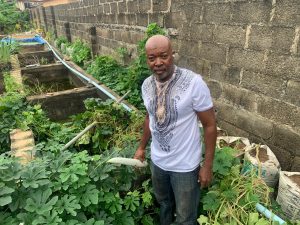
What advice would you give to someone who has plans of coming into this sector?
You need going to work more on your marketing system. You are going to work more on your logistics. The money you are going to put into buying pond, buying feed, buying fish, you invest that in logistics, in the delivery system. So, you buy fish from the farmers. You are able to do delivery at better prices.
Then, once you are able to ramp up your market and say, yes, on a monthly basis, you have 500 people that will buy your fish every month. Then, down the line, you can start thinking of partnering with farmers. Instead of creating your new farm, partner with those farmers you are buying from. Increase their capacity. So, it will be a win-win for you. So, you are concentrating more on marketing, but you are getting more money from that, which you can invest in the farmers you are partnering with.
So, you can get to a point that your farmers are able to give them money for three months and say, I am doing 50% of feed for you. Instead of burdening yourself in that aspect. So, with that, you are able to increase the capacity. Most farmers are working on that capacity. So, if you can use that model, then it’s easier that way than sinking funds in pond, construction, buying feed, buying fish and monitoring. So, your task is easier.
You have to get the bike for delivery, cool boxes, your marketing chain, online marketing and digital marketing. It’s s easier for you to come through that path, once you are able to increase that, then you are able to work with farmers more in partnership instead of trying to start a fresh farm.
How long have you been in this business?
I ventured into it since 1997.


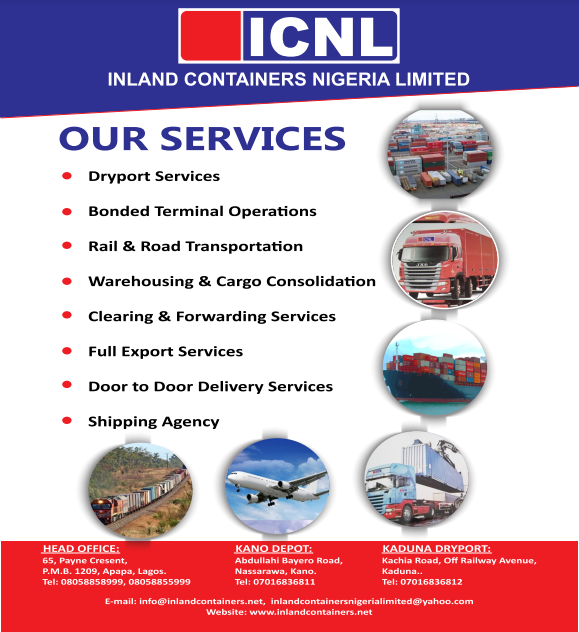

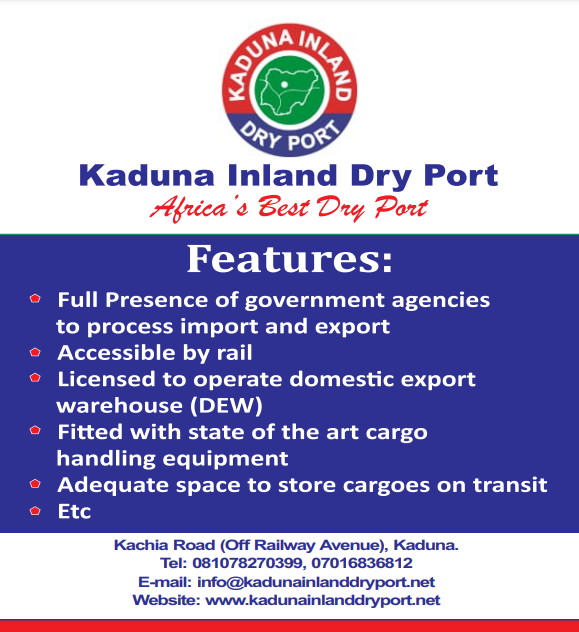


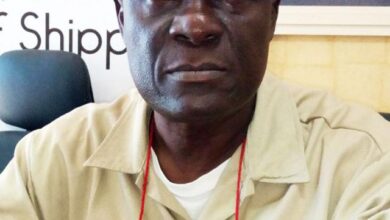
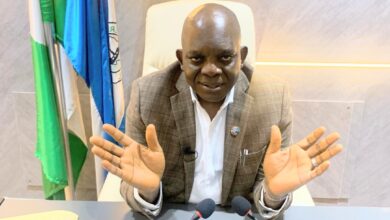
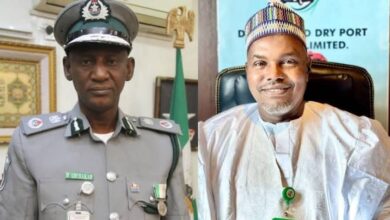


6ndpcy